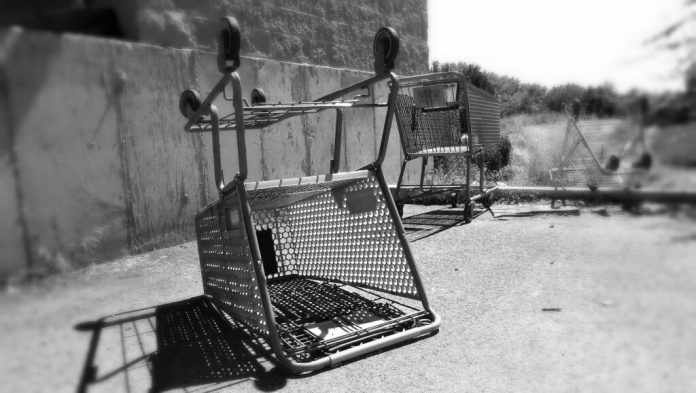With up to 85% of visitors not completing their reservations, hotels turn to technology to win them back.
NB: This is an article from CartStack
Think about the last time you found yourself window shopping. Perhaps you were walking back to your car after lunch with a friend, and while passing by a storefront, something in the display catches your eye. You stop at the window, cupping your hand over your forehead to shield your eyes from the sun and get a better view into the store that spans out behind the display.
Subscribe to our weekly newsletter and stay up to date
Now, if it was an item of clothing that you hoped to purchase, and you went into the store, engaged with the sales associate, tried on the item, and brought it up to the cash only to run out the door the moment you were asked for payment – that might seem like strange behavior.
However, thanks to digital technology and the rise of e-commerce, we can shop on virtually any device from virtually anywhere. And abandoning a cart before the final click has become a costly problem for businesses – especially hoteliers.
Hotels dedicate a significant portion of their operational budget to conversion rate optimization, and yet, a SaleCycle survey shows that 85% of visitors leave before completing their booking. Data from a hospitality report estimates $10B in lost revenue over the course of a full year.
Hotel brands spend an incomprehensible amount of time fine-tuning their offering, perfecting their service delivery, and curating advertising efforts that tug on prospective travelers’ ‘wanderlust strings’. But what about the guests who make the decision not to book? It may be tempting to only focus on reservations made – but what about all the reservations that fell through the cracks? Should hoteliers be content to let so many almost-guests run out the door of their hypothetical storefront when they’re asked to confirm their booking?
Look Beyond the Transaction
Hoteliers aren’t simply in the business of building beautiful hotels and exciting experiences for guests – they’re in the business of building relationships. When prospective travelers abandon their booking, the hotel isn’t simply losing out on the revenue associated with that booking. Instead, they are losing out on an opportunity to build a relationship with a new guest. Conversely, when hotels can establish personalized, meaningful connections with their guests and inspire long-term loyalty, the lifetime value of that guest far exceeds the revenue gained from a singular reservation.
Guest relationships are the heart and soul of hospitality. When hotels consistently lose business at the point of booking, they are losing the opportunity to convert a prospective guest into a loyal, lifetime customer. Moreover, the more guests lost to booking abandonment, the more hotels must spend to attract new leads. This is especially alarming when we consider that the cost of customer acquisition in hospitality is an average of 15% to 25% of guest-paid revenue, with many hotels spending as much as 35% of guest-paid revenue to put new heads in beds. In other words, if hotels are not actively working to reduce their booking abandonment rate, they’ll spend significantly more to maintain their current occupancy level.
Streamline the Booking Experience
With as little as 0.58% of guests completing their online reservations, the problem is clear: most hotels are too slow to recover and re-engage direct bookings. The question is – what is standing in the way of completed bookings? According to Phocuswire, the most commonly cited reason for an abandoned travel booking is the need for more research time or the desire to compare prices.
In many cases, travelers also need to check with other travelers within their group prior to booking or find the booking process/the user experience offered by the hotel’s digital interface to be too long, complex, or counter-intuitive. Perhaps this should come as no surprise – for decades, the hotel industry has approached reservations in much the same way, despite the ever-changing digital landscape.
If we know that more than 50% of travelers begin their experience and relationship with a hotel online – how is that online experience being streamlined and optimized to ensure a great first impression? How can hotels expect most travelers to confirm their booking if they rely on outdated interfaces, a lack of helpful information, and poorly targeted messaging?
Now, more than ever, the booking journey should be intuitive and frictionless. Although the war between direct bookings and OTAs has long plagued the hospitality industry, direct bookings are reportedly on the rise in 2022 and are expected to outpace OTA bookings by 2023. This is great news for hoteliers, as it demonstrates the demand for direct bookings. It is simply up to owners and operators to correctly position themselves to take advantage.
Fortunately, hoteliers can implement a booking abandonment solution to streamline and simplify the booking process and re-engage travelers needing more time to make a booking decision. With the right remarketing technology, hoteliers can automatically inspire ‘almost-guests’ back to complete bookings once they are ready.
The Power of a Booking Abandonment Tool
A booking abandonment tool is software developed to recover lost reservations by capturing the guest data as they enter it into the booking form. If they don’t complete their reservation, hotels can still reach out to them to capture the booking once they have satiated their appetite for pre-trip research and competitor pricing. Easily integrated with existing booking engines, it begins working immediately to track website visitor data in real-time. Customizable multichannel campaigns are triggered based on behavior, delivering the optimal combination of intent-driven emails, SMS text message reminders, and web push notifications to reengage lookers and turn them into delighted bookers. More importantly, these emails include room info, dates, prices, and more to maximize your personalization and answer all the questions a prospective guest may have been holding on to before making a booking decision.
To demonstrate the impact of this technology, let’s consider an example in which your hotel website generates 10,000 leads per month. We know that most hotels hover near a 2% conversion rate, which means 200 guests will book a stay. However, data shows that over 80% of bookings are abandoned, which equates to 8,000 potential guests waiting to be recovered. Recovering as little as 1% of these lost bookings would result in 80 more secured reservations — a 40% increase. Moreover, this example only considers the potential revenue lost without considering how much is spent to acquire each lead or the true lifetime value of a happy, loyal guest. There is no denying it; without a booking recovery strategy in place, hotels are not only losing out on potential revenue but also limiting the effectiveness of their marketing investment.
If hotels wait too long to follow up on abandoned bookings or never follow up, they increase the likelihood that a potential guest will make reservations with a competitor. In our ten years as a leading e-commerce solution for cart abandonment and remarketing, we’ve helped over 5,000 websites recover lost revenue. We’ve also helped our hotel clients achieve a 30% increase In average order values for recovered bookings and an amazing $40: 1 average ROI.
Read more articles from CartStack
The post Lost Revenue Not Only Downside of Online Booking Abandonment appeared first on Revenue Hub.
































